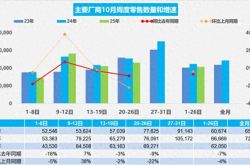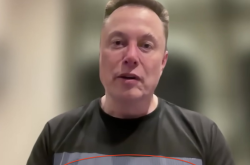The Intensifying Battle for AI Ecosystem Supremacy: A Strategic Game Behind the Tech Titans' Iron Curtain
![]() 04/23 2025
04/23 2025
![]() 498
498
A clandestine battle is brewing, centered on the standards, protocols, and ecosystems of AI and agent technologies.
In the American TV series "Game of Thrones," the identity of the protagonist remains shrouded in mystery until the final episode. Similarly, the AI industry today is playing an equally captivating game.
This isn't a traditional military or political game but a covert struggle over AI and agent standards, protocols, and ecosystems, with stakes as high as the battle for the Iron Throne in "Game of Thrones".
In this invisible war, tech giants have entered the fray, with every decision and technological release potentially reshaping the AI landscape. Behind the scenes, a deeper competition rages for the right to speak and the order of benefit distribution in the forthcoming AI era.

The Battle for Supremacy Among Tech Titans
While the public focuses on comparing AI model parameters and performance, a more profound and critical competition has been unfolding behind the scenes.
In November 2024, Anthropic took the lead by introducing the Model Context Protocol (MCP), an open standard for agents. This move was akin to throwing a stone into a calm lake, instantly causing ripples.
MCP's goal is clear: to unify communication protocols between large language models and external data sources and tools, aiming to establish a universal "language system" for the intricate world of AI interactions.
Anthropic's action swiftly triggered a chain reaction within the industry. OpenAI soon announced that its Agent SDK supports MCP, a testament to MCP's value and OpenAI's determination not to lag in this competition.
As a tech behemoth, Google naturally didn't miss out on this opportunity. Demis Hassabis, CEO of Google DeepMind, confirmed that Google's Gemini model and software development kit will integrate MCP, praising it as "rapidly becoming the open standard for the age of AI agents".
The series of positive responses from industry giants quickly spread MCP's influence, making it a focal point in the AI field.
However, the competition didn't stop there. At the Google Cloud Next 2025 conference, Google made another move, announcing the open-sourcing of the first standard agent interaction protocol, Agent2Agent Protocol (A2A). A2A breaks down barriers between existing frameworks and vendors, enabling secure and efficient collaboration among agents across different ecosystems. This move not only showcases Google's technological prowess and innovation capabilities in AI but also demonstrates its ambition in AI ecosystem construction.
These moves by tech giants have fully exposed the competition among AI and agents regarding connection standards, interface protocols, and ecosystems. In the critical period when the global AI competition landscape is still forming, the rule of "protocol is power" is becoming increasingly evident.
Whoever can grasp the right to define the basic protocol standards in the AI era will have the opportunity to redraw the power map of the global AI industry chain and redistribute the industry's value pie.
This is no longer just a technical competition but has escalated to a strategic game, with implications for the future market landscape and corporate development.
AI Applications' "Universal Connector"
With the rapid evolution of AI technology, large language models like GPT and Claude have demonstrated astonishing capabilities. They can perform complex tasks such as natural language processing, text generation, and question answering, almost possessing human-like "intelligence".
However, the true value of these models extends far beyond that. Their potential lies in their ability to interact with data and tools from the outside world, thereby solving real-life problems.
For a long time, the interaction between AI models and the outside world has faced numerous challenges. Among them, fragmentation and lack of standardization are the most prominent issues.
Due to the absence of unified standards and protocols, developers must write specific connection code for each AI model and platform when integrating AI models with different data sources and tools.
To overcome these challenges, MCP emerged. Anthropic metaphorically compares MCP to the "USB-C port" for AI applications.
Just as the USB-C port has become the standard interface for electronic device connections due to its universality and convenience, MCP aims to create a universal standard, allowing various AI models and external systems to use the same set of protocols when connecting, thereby simplifying, unifying, and streamlining the development and integration of AI applications.
Consider a software development project. Before MCP, to use AI tools to analyze a project's code repository, developers had to write complex connection code for different code repositories and AI models, which was time-consuming and labor-intensive, often yielding unsatisfactory results.
However, MCP-based AI tools can directly delve into the project's code repository, automatically analyzing the code structure, understanding historical commit records, and providing developers with precise code suggestions tailored to the project's needs. This not only significantly enhances development efficiency but also improves code quality, making the software development process smoother and more efficient.
MCP comprises two core components: the MCP server and the MCP client. The MCP server acts as a "gatekeeper" for data, enabling developers to make their data public. These data sources can be diverse, ranging from local file systems and databases to APIs of remote services.
The MCP client, on the other hand, plays the role of an "explorer," responsible for building AI applications that connect to these servers to access and utilize data. Simply put, the MCP server exposes data, while the MCP client retrieves and processes it, working together to build a bridge connecting AI to the outside world.
Security is a paramount consideration in the process of AI models accessing external data and tools. MCP significantly reduces the need for direct contact with sensitive data through standardized data access interfaces, effectively lowering the risk of data breaches. Its built-in security mechanism provides comprehensive protection for data security. Data sources can selectively share data with AI under the strict control of a security framework; after processing the data, AI can safely feedback the results to the data sources.
For instance, in practical applications, the MCP server can independently control resources without providing sensitive information such as API keys to large model technology providers. This way, even if a large model is attacked, attackers cannot obtain these critical sensitive information, thereby effectively isolating risks and ensuring data security and integrity.
From a practical perspective, MCP's advantages are not only technical but also demonstrate enormous value across different fields.
In the medical field, agents can connect to rich data sources such as patients' electronic medical records and medical databases through MCP, combined with doctors' professional judgments, to swiftly provide preliminary diagnostic suggestions, saving valuable time for patients' treatment.
In the financial industry, agents can collaborate through MCP to analyze financial data in real-time, track market changes, and even automatically trade stocks, realizing intelligent and efficient investment decisions. This division of labor among agents fully leverages their respective strengths, making data processing more efficient and decision-making more accurate, bringing new opportunities and changes to the industry's development.
In China, technology enterprises such as Tencent and Alibaba have also quickly followed suit and actively deployed MCP-related businesses. Alibaba Cloud's Bailian Platform launched a full-lifecycle MCP service, significantly simplifying the agent development process and reducing the development cycle to minutes; Tencent Cloud released the "AI Development Suite," supporting MCP plugin hosting services, helping developers quickly build business-oriented agents. These initiatives fully underscore the crucial position and immense influence of MCP in the AI ecosystem.

Agents' "Global Trade Pact"
With the continuous development and application of the MCP protocol, agents have gradually transformed from simple chat tools into action assistants capable of solving practical problems. In this new battlefield brimming with opportunities, tech giants have begun actively deploying, attempting to establish their own standards and ecological "garden walls". Unlike MCP, which focuses on connecting AI models with external tools and data, the A2A protocol aims for a higher goal - enabling efficient collaboration among agents.
The design intent of the A2A protocol is straightforward: to allow agents from different sources and vendors to understand and collaborate with each other, granting multi-agent collaboration higher autonomy and flexibility. This concept can be analogized to the World Trade Organization's (WTO) goal of reducing tariff barriers between countries.
In the world of agents, agents from different vendors and frameworks are like independent "countries," and the A2A protocol serves as a "free trade agreement." Once adopted, these agents can join the "free trade zone," using a common "language" to communicate, achieving seamless collaboration, and working together to complete complex workflows that a single agent cannot handle independently.
Task management is one of the core aspects of the A2A protocol. Communication between the client and remote agents always revolves around task completion. The protocol defines a "task" object. For simple tasks, agents can quickly complete them; for complex and long-term tasks, agents will continuously communicate and synchronize the task completion status in real-time to ensure the smooth progress of the entire task.
Additionally, A2A supports collaboration among agents. Multiple agents can send messages containing context information, replies, or user instructions to each other. This way, they can better collaborate, jointly tackle complex problems, and complete arduous tasks.
Currently, the A2A protocol has received support from the application platforms of over 50 mainstream technology enterprises, including Atlassian, Box, Cohere, Intuit, MongoDB, PayPal, Salesforce, SAP, etc. Notably, these enterprises have intricate connections with the Google ecosystem.
For example, Cohere is an independent AI startup founded in 2019 by three former Google Brain researchers. Over the years, it has maintained close technical cooperation with Google Cloud, which provides the computational power needed to train models. Atlassian, a well-known enterprise providing team collaboration tools, has widely used tools such as Jira and Confluence and has a cooperative relationship with Google, with some applications available on Google products.
Although Google claims that A2A complements Anthropic's MCP model context protocol, in the long run, as more enterprises join, the commercial value of A2A will continue to increase, potentially playing a leading role in the development of the agent ecosystem and driving changes and progress in the entire industry.
Open Collaboration or Ecological Fragmentation
The competition between MCP and A2A is essentially an ecological battle for positioning between "underlying connection" and "upper-level collaboration," reflecting tech giants' differing understandings of the AI industry's value chain. Anthropic constructs a "data access as a service" business model through MCP, with enterprise-level customers paying based on API calls, achieving deep integration of internal data assets and AI capabilities. Google, on the other hand, relies on the A2A protocol to promote cloud service subscriptions, binding the construction of the agent collaboration network with Google Cloud's computing power, storage, and other infrastructure, forming a closed-loop ecosystem of "protocol-platform-service".
At the data strategy level, both exhibit clear monopolistic intentions: MCP accumulates in-depth interaction data from vertical industries by delving into the core of enterprise data, providing a rich resource for customized model training; A2A captures massive process data in cross-platform collaboration, feeding back into Google's core advertising recommendation and business analysis models.
While both claim to be open-source, their technology layering strategies hide nuances. MCP retains paid interfaces for enterprise-level functions, while A2A guides partners to prioritize access to the Google Cloud ecosystem. Essentially, both are building technological moats through the "open-source infrastructure + commercial value-added" model.
Standing at the crossroads of industrial change, the evolution paths of MCP and A2A are reshaping the underlying architecture of the AI world. On the one hand, the emergence of standardized protocols accelerates the democratization of technology, allowing small and medium developers to access the global ecosystem through unified interfaces, reducing the deployment cycle of enterprise applications from months to hours. On the other hand, if the protocol system dominated by giants forms a fragmented landscape, it will lead to intensified data silos, high technical compatibility costs, and may even trigger a zero-sum game among "ecological camps".
A more profound impact lies in the intelligent infiltration of the physical world: with the explosive growth of industrial robots, autonomous driving terminals, and medical intelligent devices, MCP and A2A are becoming the "synaptic connections" between virtual intelligence and the physical world.
In intelligent manufacturing settings, robotic arms synchronize real-time working condition data via standardized interfaces, enabling AI models to dynamically optimize production parameters, thereby constructing a closed-loop intelligence framework of "perception-decision-execution." In the medical field, the real-time synergy between surgical robots and diagnostic models has translated the concept of precision medicine into clinical practice. The crux of these transformations lies in the strategic significance of protocol standards as "digital infrastructure," which now transcends technology itself, becoming the linchpin in unlocking the trillion-dollar intelligent economy.
However, significant challenges persist: industrial control demands millisecond-level performance from protocols, while medical data necessitates stringent privacy protection standards. Both factors necessitate the continuous evolution of the protocol system.
In an era where technological competition and commercial interests are deeply intertwined, the delicate balance between openness and closure becomes paramount. Establishing a cross-industry standard co-governance mechanism may be the only way to avert a repetition of the "railway gauge war" and truly realize the technological vision of the "Internet of Everything."
In this silent power struggle, the battle between MCP and A2A rages on. They are not merely products of technological innovation but also bearers of business strategies, collectively penning a pivotal chapter in the AI industry's transition from "individual intelligence" to "ecological collaboration."
Ultimately, the direction of the industry is determined not solely by technological superiority but also by the values of openness, sharing, and ecological win-win, which constitute the core "protocol standard" in the AI era.
AI Agent Snaps Its Fingers, Commercial Gears Accelerate
Enterprise-level AI is "transitioning from virtual to real," yet what obstacles remain for its implementation?
Evolution of Large Models: Where Will the AI Industry Head Next?
Big Tech Companies Reignite AI Arms Race, but What Are They Truly Wagering On?
【Original Content by Tech Cloud Report】
For reprints, please indicate "Tech Cloud Report" and include a link to this article.








